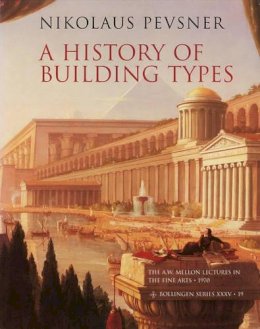
History of Building Types
Nikolaus Pevsner
An essential guide to vital and often overlooked features of the architectural and social inheritance of the West
This book provides vital insights into the ways in which architecture reflects the character of society. Drawing on his immense erudition and keenly discerning eye, Nikolaus Pevsner describes twenty types of buildings ranging from the most monumental to the least, and from the ideal to the most utilitarian. He covers both European and American architecture, with examples chosen largely from the nineteenth century, the crucial period for diversification. Included are national monuments, libraries, theaters, hospitals, prisons, factories, hotels, and many other public buildings. Incisive and authoritative, A History of Building Types traces the evolution of each type in response to social and architectural change, and discusses differing attitudes toward function, materials, and style.
Product Details
About Nikolaus Pevsner
Reviews for History of Building Types
-Raymond Mortimer, Sunday Times
